Don't wanna be here? Send us removal request.
Text
Surviving the Storm: A Tactical Medical Roadmap for Disaster Assessment in Emergency Department
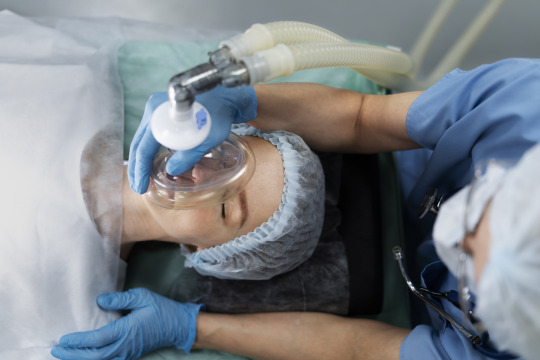
Fellowship in Emergency Medicine is essential as it guides step-by-step Medical Approach to Disaster Assessment and Emergency Department Patient Management Catastrophes, whether normal or man-made, present novel difficulties to crisis divisions (EDs), requiring a precise and therapeutically sound way to deal with guarantee viable assessment and the board of patients. Therefore, Fellowship in Emergency Medicine in India specifies the high-level clinical systems vital for exploring these basic circumstances:
First Evaluation of Medical Needs: • Quickly upon notice of a catastrophe, ED faculty start a fast evaluation to decide the clinical necessities of the circumstance. • Survey the sort and degree of wounds, potential irresistible infection dangers, and accessible clinical assets to illuminate resulting activities.
Assigning roles to Healthcare Providers: • Assign groups inside the ED, appointing explicit jobs and obligations to each colleague. • Assign staff for emergency, treatment, coordination of care, and correspondence with outside organizations.
Use Progressed Emergency Frameworks: • Execute progressed emergency frameworks like the Straightforward Emergency and Fast Treatment (Begin) or the Changed Early Admonition Score (MEWS). • Focus on patients in light of the seriousness of their wounds and clinical requirements, guaranteeing ideal asset assignment and treatment results.
Distribution of Clinical Assets: • Decisively allot clinical assets, including work force, supplies, and hardware, to oversee patient consideration really. • Guarantee satisfactory staffing levels and adequate clinical supplies to fulfill the needs of the debacle circumstance.
Give Quick Clinical Interventions: • Regulate quick clinical mediations to balance out patients with perilous wounds or conditions. • Perform cardiopulmonary revival (CPR), discharge control, aviation routes the executives, and other basic intercessions as the need might arise.
Examine and Respond to Psychological Needs: • Distinguish and address mental requirements among patients and their families impacted by the calamity. • Give mental medical aid, guiding, and support to mitigate injury and trouble and advance mental strength.
Coordinate with Specialty Administrations: • Coordinate with specialty administrations inside the clinic, like injury medical procedure, escalated care, and irresistible illness the board. • Work with convenient and fitting consideration for patients with complex clinical necessities, including careful intercessions and specific medicines.
Speak with Outside Offices: • Communicate openly with outside organizations, such as public health departments, emergency medical services (EMS), and other healthcare facilities. • Coordinate patient exchanges, asset sharing, and situational updates to streamline patient consideration and asset usage.
Screen Patient Stream and Limit: • Constantly screen patient stream and limit inside the ED, changing emergency needs, treatment conventions, and asset distribution on a case-by-case basis. • Guarantee effective patient throughput while keeping up with nature of care and security norms.
Direct Post-Disaster Interviewing and Assessment: • After the initial shock and reaction, lead careful post-op interviews and assessments to survey the viability of clinical mediations. • Distinguish regions for development, refine conventions, and upgrade readiness for future crises in view of examples gained from the occasion.
Online Fellowship Course in Emergency Medicine India teaches the clinical way to deal with catastrophe assessment and patient administration, crisis division faculty can really answer emergencies, give opportune and fitting clinical consideration, and relieve the effect of fiascos on general wellbeing and security.
So, after completing a Fellowship Course in Emergency Medicine by Medvantage, it guarantees that EDs are ready to deal with the difficulties presented by any disaster while focusing on better patients’ recovery and results using the most efficient methodology.
#medvantage#Online Fellowship in Emergency Medicine India#Online Fellowship Course in Emergency Medicine India#Fellowship in Emergency Medicine#Fellowship in Emergency Medicine India#Online Fellowship in Emergency Medicine#Course in Emergency Medicine#Emergency Medicine#Emergency Medicine Course#Fellowship in Emergency Medicine Course India#online fellowship courses#Online Medical Course after MBBS#Online Medical Course for Doctors
0 notes
Text
Navigating the Next Chapter of womanhood: Embracing Change After Menopause and Empowering Women's Health
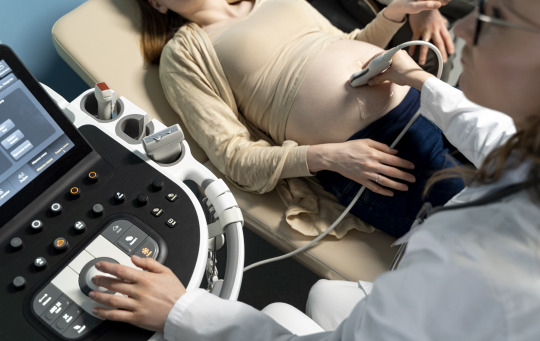
Menopause is a physiological landmark that signifies the end of a woman's reproductive journey. It is typified by complex hormonal changes that impact multiple facets of health. This normal shift, which usually happens between 45 and 55 years of age, calls for a deeper investigation into its medical complexities and the possibility of empowering women via all-encompassing healthcare approaches. That’s why a Fellowship in Obs & Gynae India is one of the most relevant courses that any health care professional should pursue.
Fundamentally, the slow decrease in the ovaries' ability to produce progesterone and estrogen causes menopause. Numerous symptoms are brought on by these hormonal changes, including vasomotor symptoms like night sweats and hot flashes as well as mood swings, sleep problems, and genitourinary problems. Understanding the biological causes of these symptoms is essential to developing therapeutic strategies that work.
Online Fellowship Course in Obs & Gynae teaches about the hormone Replacement Therapy (HRT) has long been a mainstay in the treatment of menopausal symptoms. It entails adding estrogen and occasionally progesterone. HRT's hazards and benefits can vary, thus using it properly needs taking into account each person's unique health circumstances. Making an informed decision on hormone replacement therapy (HRT) requires a complete assessment of a woman's medical history, including her cardiovascular health and breast cancer risk.
Fellowship in Obstetrics and Gynecology In addition to medication therapies also guides about lifestyle changes are essential for controlling menopausal symptoms and enhancing general health. Frequent exercise has been demonstrated to improve bone density and cardiovascular health while reducing symptoms like hot flashes and mood swings. A healthy diet that includes enough calcium and vitamin D is essential for reducing the risk of osteoporosis, which is heightened by hormonal changes that occur after menopause.
During this stage, it's important to pay attention to mental health in addition to physical problems. Menopause can be accompanied by mood swings, anxiety, and sadness; the effects these conditions can have on a woman's health should not be understated. When healthcare doctors and mental health specialists work together, they can provide complete support that includes counseling, psychoeducation, and, when needed, pharmaceutical therapies.
Menopause also signals a shift in emphasis toward preventative healthcare. In light of the changing health landscape, routine screenings for diseases including osteoporosis, breast cancer, and cardiovascular disease become essential. Long-term results can be enhanced by educating women about these exams and encouraging a proactive attitude toward healthcare. Therefore, Fellowship Obs & Gynae is an essential course for healthcare practitioners.
Beyond providing for the specific needs of each patient, the medical community also has a role in promoting greater public awareness and menopausal health research projects. To improve menopausal healthcare, it is imperative to de-stigmatize menopause, create a safe space where women may talk candidly about their experiences, and promote research into cutting-edge therapies.
In summary, menopause is a complicated medical condition that calls for an all-encompassing approach to treatment. A comprehensive plan is necessary, encompassing everything from hormone treatment and lifestyle modifications to mental health support and preventive measures which can only be learned after doing a Fellowship Course in Obstetrics and Gynecology India.
#medvantage#Fellowship in Obs and Gynae#Fellowship in Obstetrics and Gynecology#Online Fellowship in Obs and Gynae#Online Fellowship in Obstetrics and Gynecology#Fellowship in Obstetrics and Gynecology India#Fellowship Course in Obstetrics and Gynecology#Obs and Gynae#Fellowship in Obs and Gynae India#Fellowship Course in Obs and Gynae#Obstetrics and Gynecology#Fellowship Course#Online Fellowship Course
0 notes
Text
Optimizing Critical Care: A Comprehensive Guide to Enhancing the Assessment for Standard ICU Patients
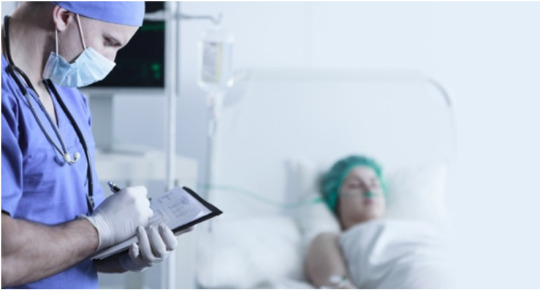
Fellowship in Critical Care is one of the most important courses in India as it teaches about the general flow of assessment for a standard ICU patient who is intubated with an arterial line and is on multiple drugs. In a clinical setting your assessments need to be based on the patient’s presenting problem and current condition. So first we introduce ourselves to the patient and if present the family as well. Then slowly and steadily start to explain what you are going to do; this should be done regardless of the patient’s level of consciousness. As with any initial interaction with a patient, ensure that you are following correct infection prevention and control policies with hand hygiene and appropriate personal protection equipment. Even during a potential short interaction, you will need to collect important information about your patient like is he/she awake and alert, does the patient focus on you when you introduce yourself, does the family appear stressed.
Fellowship Course in Critical Care Medicine guides you on how to do the basic neurological assessment of a patient that starts with consists of four components, level of consciousness, pupils, vital signs including pain and motor strength. These will be demonstrated for both the responsive and non-responsive patient. Its important to remember that the goal with the neurological assessment is to get the best possible response, which means whenever possible you should remove or reduce sedation prior to assessment. Relying solely on blood pressure or cardiac output to determine adequate circulation can lead to erroneous conclusions. General techniques to assess peripheral perfusion include as with pitot pulses capillary refill and edema and inspection where we look for modeling evidence of bleeding and cyanosis.
Fellowship in Critical care in India teaches the most effective and common techniques used for pulmonary physical assessment are inspection and auscultation. For inspection observe the general appearance and the state of the patient including color such as cyanosis, modelling, pallor, rate rhythm and pattern of breathing, symmetry of chest expansion and the shape of the chest. Thus, inspection should include state of nutrition, symmetry, and posture. Wasting and hallmarks of poor nutrition may indicate chronic disease, poor grooming or slack posture may suggest depression or low self-esteem. Then proceed to more specific examination of the skin, looking for redness or other signs of infection, hair loss, nail thickening, and moles or other areas of pigmentation and inquiries about any recent changes in skin lesions that could indicate early cancer. Inspection also should encompass, in particular, areas that the patient normally would not be able to see, such as the scalp, the back, and the buttocks. The nails and the skin are particularly important in making a diagnosis. Examination of the nails can provide important clues about systemic disease. Clubbing of the nails (broadening of the nailbeds, with curved and shiny nails) may indicate congenital heart disease, chronic obstructive pulmonary disease, bronchogenic carcinoma, or another cardiac or pulmonary condition. Pitting of the nails occurs in about 50 percent of patients with psoriasis. The skin should always be inspected for cancer, though it is sometimes difficult to differentiate a benign mole (nevus) from a cancer. That’s why doing a fellowship course in Critical Care by MedVantage is an essential need for every healthcare professional.
#Fellowship in Critical Care#Fellowship in Critical Care india#online Fellowship in Critical Care#medvantage#Fellowship Course in Critical Care#Fellowship Course in Critical Care Medicine#Fellowship in Critical Care Medicine#Online Medical Course after MBBS#Online Medical Course for Doctors#Online Fellowship Courses#fellowship courses after mbbs
0 notes
Text
Navigating the Front Lines: Key Strategies and Basics in Emergency Medicine

Fellowship in Emergency Medicine is one of the most sort after course all around the world. The reason for that is it guides and improves a healthcare professional approach to the undifferentiated patient in the emergency department. The first question the we generally ask the patient when we see them in ED is are they sick or not sick. If the patient is sick, we need to act quickly in order to get the situation under control and stabilize them by starting the basic and calling for help if you are a junior doctor, so you know you have a senior to make sure nothing goes wrong. Also, we have to prioritize sick patients over not sick ones, clearly the ones have a life-threatening condition has to be cared first.
So, a fellowship course in Emergency Medicine helps us on how to rapidly assess the patient so we can get to the core reason why or what’s causing it and we have to simultaneously stabilize the patient at same time we are diagnosing and treating them, so that they start to feel better and decrease the likelihood of a bad outcome or complication which might turn out to be life threatening. Then the health care professional also has to expedite the diagnostic workup and management.
In India, Emergency Medicine gets plethora of different cases and scenarios, so when some is really sick, we need to get to the bottom of the problem as soon as possible. When we assess the an acutely ill patient, we generally start with a goal of identifying and treating immediate life-threatening condition. We accomplish that by performing the basics which is A-B-C-D Assessment on each and every patient in ED, each and every time. Whenever somebody’s sick we start with by monitoring their oxygen levels and performing IV access. Oxygen as it helps with the breathing and monitoring to keep tabs on whats going with the patient and IV access so we can treat them if needed. So, while we are assessing the patient and they have a life-threatening situation we have to treat it immediately, so you can’t take history of patient leisurely and perform a physical exam and then start thinking about a treatment that’s why doing fellowship course in Emergency Medicine helps you take make decisions faster and with a better accuracy.
So, we need to do all of it together to make sure our patient starts feeling better and get them stabilized as rapidly as possible for the best outcome. That’s why doing a Fellowship course in Emergency Medicine in India is one of the best decisions any healthcare professional can make in their lifetime.
#Fellowship Course in Emergency Medicine#Fellowship in Emergency Medicine#Fellowship Emergency Medicine#Online Fellowship in Emergency Medicine#Online Fellowship Course in Emergency Medicine India#Emergency Medicine India#Fellowship in Emergency Medicine after MBBS#Emergency Medicine Course#Fellowship in Emergency Medicine India#medvantage
1 note
·
View note
Text
Changing Women's Health: Pioneering Advances in Obstetrics and Gynecology

Obstetrics and Gynecology (OB/GYN) is a medical specialty that deals in detail with a variety of women’s reproductive health issues. These obstetrics courses, looking at pregnancy and childbirth, and gynecology which focuses on the dysfunction of the female reproductive system play an important role in ensuring the best health care for women Thats why doing Fellowship in Obstetrics and Gynecology is one of the decisions any healthcare professionals make.
A closer examination of the medical challenges in these areas reveals the depth of knowledge and technology required to address the complex challenges of female obstetrics. Obstetricians, primary care providers during pregnancy, use a variety of medical interventions to monitor and support maternal and fetal health. Prenatal care including routine screening, prenatal genetic testing, and ultrasound aims to identify and manage potential complications in early pregnancy in this area, research non-invasive prenatal procedures have improved dramatically, provided more accurate genetic information, and enabled early detection of fetal abnormalities High-risk pregnancy Specialized care is required, and often involves effort a in collaboration with maternal and fetal medicine specialists. These subspecialists use advanced imaging techniques such as magnetic resonance imaging (MRI) to evaluate complex fetal conditions and plan interventions to improve outcomes Fellowship in Obs and Gynae, helps gynecologists navigate the complexity of women’s reproductive health after pregnancy.
Innovations in diagnostic modalities such as colposcopy and hysteroscopy allow more accurate visualization of the uterus and endometrium to diagnose and manage conditions such as endometriosis Advances in molecular diagnosis and treatment targeted on gynecologic cancer contributes to the development of treatment plans for women facing reproductive Obs and in India Doing a Fellowship in Gynae is a laparoscopic approach in robotic surgery. It also helps to integrate potentially revolutionary techniques, enabling less invasive treatments with shorter recovery times and improved patient outcomes.
Thus, any healthcare professional with a Fellowship in Obstetrics and Gynecology by MedVantage can seamlessly collaborate with obstetricians and gynecologists to ensure women are well cared for throughout their reproductive lives. This includes addressing fertility issues, hormone imbalances, and conditions such as polycystic ovary syndrome through approaches that integrate medicine, surgery, and reproductive technology the OB/GYN profession leads on medical research, explore new technologies and treatments. From exploring the genetic basis of reproductive disorders to harnessing the potential of regenerative medicine on uterine health, ongoing research holds the promise of making a difference Obstetrics and gynecology stands exists for dynamic and ever-evolving specialty services that utilize state-of-the-art technology and medical expertise to deliver the best possible care.
#MedVantage#Fellowship in Obstetrics and Gynecology#Fellowship in Obstetrics and Gynecology India#Fellowship Course in Obstetrics and Gynecology#Obstetrics and Gynecology#Online Fellowship in Obstetrics and Gynecology#Fellowship in Obs and Gynae#Fellowship in Obs and Gynae India#Online Fellowship in Obs and Gynae#Fellowship Course in Obs and Gynae#Obs and Gynae#Course in Obs and Gynae#Online Fellowship in Obs and Gynae India
0 notes
Text
Family Medicine: Weaving Health Together, One Family at a Time

In the increasingly evolving world of health care, one thing that remains constant is family medicine and physicians dedication towards treating the whole person. Family medicine’s cornerstone is an ongoing, personal patient-physician relationship focusing on integrated and comprehensive care. That’s why doing a fellowship course in family medicine after MBBS is one of the best decision any healthcare professional can make.
Few of the key elements of Fellowship in Family Medicine course by Medvantage are – Family medicine is highly personal as a family physician follow patients overtime and the specialty are based on good communication principles and how well you empathize with the patients for example ordering fewer tests the only which are needed, ordering less expensive procedures. Family physicians provide one of the highest quality care and significantly improve morbidity. They also improve mortality substantially and do it at bare minimum cost because it starts with the patient, the patient is at center of what a family physician does. Good communication skills with the patient helps bring out all of their history and helps in treatment of the patient in the context of their values and what’s available to them.
So, after completing fellowship in family medicine, it helps physicians embrace the biopsychosocial model of healthcare. So, the bio, the patient has diabetes and heart failure. Psychological is when the patients have anxiety or generalized anxiety disorders due to a variety of trigger points for example, they might have recently lost their job or their kid isn’t doing well in school. Then the social is for example a patient is drinking more often which leads to poor control of diabetes and other metabolic disorders, that’s how it all ties up together. Every patient tie to these different domains and they are all highly interrelated. Family physicians put patient in context of relationships, e.g. a family physician doesn’t just see one member of the family, the mother, they also see the son, her husband, which helps get them a more complete picture of what’s going on in the family, what kind of area she lives in, so it puts patient in context of their human relationships and their relationship to society at a larger level.
After completing the fellowship in family medicine, the healthcare professional eligible to see patients in variety of spectrum of care such as nursing home, hospitals and clinics and others. It helps manage patients in the hospital setting as well, see them through the transition between the hospital, the outpatient setting and their home.
Conclusion
The family medicine course by Medvantage is highly efficient in the management of acute and chronic conditions. It helps in prevention screening, cancer screenings and immunizations by providing a holistic preventive approach.
#medvantage#Fellowship Course in Family Medicine#Fellowship in Family Medicine#Fellowship in Family Medicine after MBBS#Fellowship Course in Family Medicine after MB#Family Medicine after MBBS#Fellowship Family Medicine#Family Medicine Course#Fellowship in Family Medicine India#Family Medicine India
0 notes
Text
Managing Diabetes in Adolescents: A Complex Interplay of Physiology and Psychosocial Factors

Introduction
A fellowship in Diabetes Mellitus by Medvantage helps understand how Diabetes in adolescence, marked by dynamic physiological changes and intricate psychosocial development, presents a unique set of challenges for individuals grappling with diabetes. Whether dealing with type 1 or type 2 diabetes, the delicate balance of hormonal fluctuations and lifestyle adjustments during this period requires meticulous medical management and a nuanced understanding of the psychological impact on adolescents.
Physiological Challenges
Adolescence is characterized by growth spurts and hormonal fluctuations, both of which can influence insulin sensitivity. In diabetes, this heightened insulin resistance demands vigilant monitoring and adjustment of insulin doses. The intricacies of managing blood glucose levels become more pronounced, necessitating personalized care plans that account for the individualized responses to physiological changes during adolescence.
Moreover, the emergence of insulin resistance can complicate the delicate equilibrium in glucose regulation, reinforcing the importance of a comprehensive approach to diabetes management. Dietary habits and physical activity, often erratic during adolescence, contribute to the complexity of glycemic control.
Psychosocial Impacts
The psychosocial aspect of diabetes in adolescence is equally pivotal. The quest for autonomy and independence clashes with the demanding nature of diabetes management, potentially leading to emotional distress. Adolescents may grapple with feelings of frustration, isolation, and even defiance in their efforts to assert independence while adhering to strict medical routines.
Social dynamics play a substantial role, with adolescents fearing stigmatization and struggling to strike a balance between fitting in and adhering to health guidelines. Peer support, alongside transparent communication with healthcare providers, plays a crucial role in addressing these psychosocial challenges. That’s why doing fellowship in diabetology after MBBS is one of the most prominent course one can do.
Educational Strategies by doing Fellowship in Diabetes Mellitus
Empowering adolescents to manage their diabetes involves providing comprehensive education that encompasses both medical and psychosocial aspects. Diabetes education programs, integrated into both school curricula and healthcare settings, can offer valuable resources. Teaching self-monitoring techniques, insulin management, and coping mechanisms equips adolescents with the knowledge and skills essential for autonomous diabetes care.
Healthcare professionals should actively engage adolescents in their care, fostering an open dialogue to address concerns and dispel misconceptions. Emphasizing the importance of adhering to medical recommendations while providing practical strategies for navigating social situations can contribute to improved diabetes management in this age group.
Conclusion
Fellowship in Diabetology by Medvantage helps to teach how to effectively manage diabetes in adolescence by using approach that recognizes the intricate interplay between physiological changes and psychosocial factors. By tailoring medical interventions to the unique needs of adolescents and fostering a supportive environment that encourages communication and education, healthcare professionals can empower young individuals to navigate the complexities of diabetes during this critical phase of development.
#medvantage#fellowship in diabetes mellitus#diabetes mellitus#Fellowship in diabetology after mbbs#Fellowship Course in Diabetes Mellitus#Fellowship in diabetology#Fellowship in diabetes after mbbs#Fellowship in diabetes in india#Online fellowship courses#Online fellowship in diabetology#Online fellowship in diabetes mellitus#Diabetology course after mbbs
0 notes
Text
Mastering the Complex Maze: Navigating Type 2 Diabetes with Medvantage's Advanced Certification
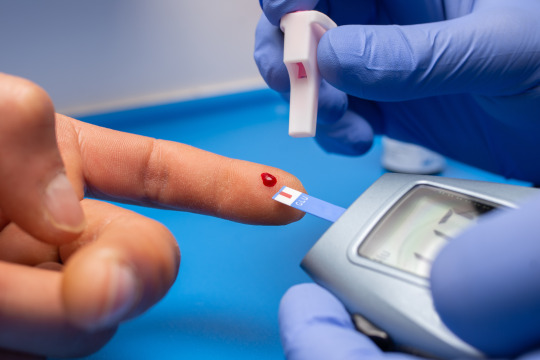
Introduction:
Type 2 Diabetes Mellitus (T2DM) stands as a formidable challenge in the realm of healthcare, marked by its intricate pathophysiology and the far-reaching implications it holds for affected individuals. The Advanced Certificate in Diabetes Mellitus, offered by Medvantage, serves as a beacon of knowledge, equipping healthcare professionals with in-depth insights into T2DM. This article explores the program's focus on pathophysiology, clinical manifestations, diagnostic criteria, and evidence-based management strategies.
Pathophysiology of T2DM in Advanced Certificate in Diabetes Mellitus
1.Insulin Resistance: The foundation of T2DM lies in peripheral insulin resistance, where vital tissues—skeletal muscle, adipose tissue, and the liver—show diminished responsiveness to insulin. This disruption hampers glucose uptake and utilization, forming a key focus in the program's curriculum.
2.Beta-Cell Dysfunction: A progressive decline in pancreatic beta-cell function exacerbates hyperglycemia. Genetic factors, chronic inflammation, and metabolic stress contribute to the deterioration of insulin-secreting beta cells.
3.Adipose Tissue Dysregulation: Obesity-induced dysfunction in adipose tissue triggers an inflammatory milieu, releasing adipokines and free fatty acids. These factors intricately contribute to insulin resistance and disrupted glucose homeostasis, an aspect thoroughly explored in the advanced curriculum.
Clinical Manifestations:
1.Polyuria, Polydipsia, Polyphagia: The classical symptoms of T2DM find their roots in hyperglycemia-induced osmotic diuresis. It delves into the intricacies of fluid loss, increased thirst, and excessive hunger as cardinal signs demanding clinical attention.
2.Fatigue and Malaise: The program underscores the link between inefficient glucose utilization and persistent fatigue, recognizing the clinical relevance of energy metabolism in T2DM.
3. Microvascular and Macrovascular Complications: The comprehensive care required for individuals with T2DM, shedding light on the microvascular complications (retinopathy, nephropathy, neuropathy) and macrovascular complications (cardiovascular disease) resulting from chronic hyperglycemia.
Diagnostic Criteria:
1.Fasting Plasma Glucose and Oral Glucose Tolerance Test: The Course emphasizes the importance of precise diagnostic criteria, including elevated fasting plasma glucose levels and abnormal oral glucose tolerance tests.
2.Hemoglobin A1c (HbA1c): With a focus on long-term glycemic control, the program recognizes HbA1c levels as pivotal diagnostic and monitoring tools in T2DM.
Management in Advanced Certificate in Diabetes Mellitus:
1.Lifestyle Modification: The role of lifestyle interventions—regular physical activity, weight management, and a balanced diet—as fundamental pillars in T2DM management, addressing both insulin resistance and beta-cell dysfunction.
2.Oral Antidiabetic Medications: The curriculum covers a spectrum of pharmacotherapy options, including metformin, sulfonylureas, thiazolidinediones, and dipeptidyl peptidase-4 (DPP-4) inhibitors, each targeting specific aspects of T2DM pathophysiology.
3.Injectable Therapies: In advanced cases, the program explores the necessity of insulin therapy or glucagon-like peptide-1 (GLP-1) receptor agonists to optimize glycemic control.
4.Patient Education and Continuous Monitoring: Medvantage underscores the pivotal role of patient empowerment through education on self-monitoring, medication adherence, and lifestyle management for long-term success.
Conclusion:
The Advanced Certificate in Diabetes Mellitus provided by Medvantage represents a milestone in advancing expertise in T2DM. Through a multifocal approach and a deep understanding of pathophysiology, the program lays the foundation for evidence-based clinical practice. As research progresses, the personalized care plans and tailored therapeutic strategies fostered by the course provides hope for improved outcomes and an enhanced quality of life for individuals navigating the complexities of T2DM.
#fellowship in diabetes mellitus#medvantage#diabetes mellitus#Advanced Certificate in Diabetes Mellitus#Advanced Certificate Course in Diabetes Mellitu#Certificate in Diabetes Mellitus
0 notes
Text
Life on the Line: Decoding Critical Care fundamentals the Crucible of the Golden Hour Emergency

Critical Care Medicine is a highly specialized field within healthcare that focuses on the comprehensive management of patients grappling with life-threatening conditions. From severe injuries to complicated illnesses, critical care physicians play an indispensable role in delivering immediate and intensive care to stabilize patients and enhance their chances of recovery. Let's delve deeper into the process of how doctors handle emergencies in this critical situation. That’s why a Fellowship in Critical Care is necessary and very important in today’s healthcare.
The Ticking Clock: Less Time For Action
Critical Care Medicine is characterized by its prompt response to emergent situations. Whether dealing with a trauma victim, a patient in shock, or someone experiencing respiratory failure, time is of the utmost essence. The rapid and decisive actions taken during this critical hour can make a significant difference in a patient's outcome. The ability to make swift decisions and initiate timely interventions is a hallmark of success in the high-stakes environment of critical care.
Collaboration is Key: A Multidisciplinary Approach
In the realm of critical care, collaboration is not just encouraged; it is a necessity. Critical care teams typically consist of intensivists, nurses, respiratory therapists, pharmacists, and other specialists. The synergy of diverse expertise ensures a comprehensive and holistic approach to patient care. This multidisciplinary collaboration enhances the efficiency of interventions, contributing to the overall success in managing critically ill patients.
Precision in Decision Making: The Role of Intensivists
Intensivists, physicians specialized in critical care, stand at the forefront of decision-making. They conduct detailed patient histories, perform suitable diagnostic tests, and make clinical observations to formulate precise treatment plans. The ability to assess and adapt to dynamic situations is a skill honed by these medical professionals, allowing them to navigate the complexities of critical care with finesse.
Continuous Vigilance: The Art of Monitoring
In critical care units, monitoring is not an occasional task; it is a continuous and meticulous process. From vital signs to organ function, every aspect of a patient's status is closely watched. Advanced technology plays a pivotal role, aiding in real-time assessment and enabling immediate adjustments to treatment strategies. The constant vigilance exercised in critical care units ensures that any deviation from the norm is promptly addressed, preventing potential complications.
The Nexus of Research and Education
Ongoing research is the lifeblood of critical care practices. Continuous education and training for healthcare professionals in this field are essential to keep up with evolving standards and technologies. The dynamic nature of critical care demands a commitment to staying abreast of the latest advancements, ensuring that patient care is not only current but also at the forefront of medical innovation.
In conclusion, Medvantage’s Critical Care Medicine course stands as one of the most sort after courses in the realm of healthcare, dedicated to the immediate and intensive care of those facing life-threatening conditions. With a commitment to rapid response, interdisciplinary collaboration, and technological innovation, critical care professionals strive to navigate the complexities of medical urgency and pave the way for improved patient outcomes in the crucial hour of emergency. The delicate dance between time, collaboration, precision, vigilance, and knowledge defines the essence of Fellowship in Critical Care Medicine, making it an indispensable cornerstone in the continuum of patient care.
#Medvantage#Fellowship in Critical Care Medicine#Fellowship in Critical#Critical Care Medicine#Critical Care#Fellowship Course in Critical Care Medicine#Fellowship Course in Critical Care#Course in Critical Care Medicine#Course in Critical Care
0 notes
Text
Unmasking the Global Diabetes Epidemic: Understanding the dangers of “The Sweet Tooth"
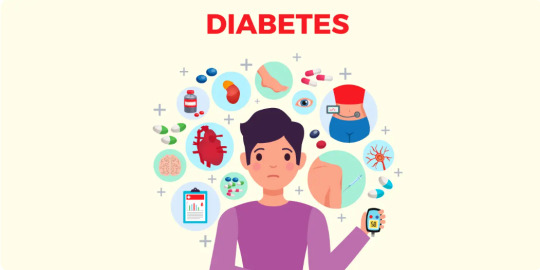
EPIDEMIOLOGY OF DIABETES MELLITUS
Diabetes mellitus is a clinical syndrome with many causes, which is characterized by the presence of hyperglycemia (mellitus being Latin for ‘sweet’). Type 2 diabetes accounts for around 90% of cases, while type 1 diabetes accounts for most of the remainder. All types of diabetes is consequences of relatively or absolute insulin deficiency. Therefore, a Fellowship in Diabetes Mellitus is considered one of the most relevant fellowships around the world.
Together both the diabetes type 1 and type 2 are holding similar hyperglycemic complications but their etiology and pathophysiology are different.
In type 1 diabetes, there is an absolute deficiency of insulin because of an immune-mediated destruction of insulin-producing β cells in the pancreatic islets of Langerhans.
Contrast, in type 2 diabetes, concentrations of circulating insulin are typically elevated, but there is a relative deficiency of insulin because there is reduced sensitivity to insulin in peripheral tissues (because of obesity) and the β cells cannot make ample insulin to overcome this ‘insulin resistance’.
PREVALENCE AND DEATH RATE
Diabetes carries a heavy personal burden for those affected as well as high financial costs to health-care systems and society at large scale.
In year 2017, diabetes causes 4 Million death globally and healthcare expenditure of diabetes was calculated globally around to be 60,51,51,16,500 Indian rupees or 10% of total healthcare expenditure.
The prevalence of diabetes is rising. Globally, it is estimated that 463 million people had diabetes in 2019 (9.3% of the world adult population), approximately 90% with type 2 diabetes. This figure is expected to reach700 million by 2045.
Prevalence is highest in middle eastern and low eastern parts of Africa and varying around the world. According to ethnicity and environmental factors (obesity, diet, low - habitual physical activity, urbanisation and economic development).
A pronounced rise in the prevalence of type 2 diabetes occurs in migrant populations from low-income to industrialized countries. In many high-income countries, type 2 diabetes is no longer rare in children and adolescents, particularly in people of South Asian countries because of these countries, increased survival is a factor underlying rising prevalence.
Type 1 diabetes is also subject to geographical variation and is generally more prevalent in countries closer to the polar regions. Finland for instance, has the highest rate of type 1 diagnosis per year at >60 per 100 000 of the population, whereas in China and Venezuela the incidence is only 0.1 per 100 000. The incidence of type 1 diabetes is also increasing: between 1989 and 2013, 3.4 % more children were diagnosed worldwide each year. Type 1 diabetes is more common inpeople of European descent than in other ethnic groups and, for reasons that are not understood, more people are diagnosed in the winter months more as compare to others.
MICRO AND MACRO VASCULAR COMPLICATION
Microvascular complications:
In Eyes leads to Retinopathy, Cataract ultimately to glaucoma.
In Kidneys due to high blood glucose leads to high blood pressure and affecting nephrons leading to nephropathy.
In Nerves hyperglycemia damages peripheral nerves system this will results in pain and numbness. Feet wounds will go undetected and will left untreated ultimately leading to gangrene.
Macrovascular complications:
In Brain there will be increased risk of stroke and cerebrovascular disease including transient ischemic attacks, cognitive impairment etc.
In Heart due to high blood pressure and insulin resistance there is increased risk of heart-attacks and coronary heart disease.
In Extremities peripheral narrowing of blood vessels will leads to peripheral neuropathy hands and feet wounds are likely to heal slowly and will lead to certain complications like gangrene and limb amputations.
Join the Medvantage Fellowship in Diabetes Mellitus to get a deeper and more precise understanding of diabetes and it's compollications.
#Fellowship in Diabetes Mellitus#Fellowship in Diabetology#Online Fellowship in Diabetes Mellitus#Diabetes Mellitus Course India#Diabetology Course after MBBS#Certificate in Diabetes Mellitus#Diabetes Mellitus#Advanced Certificate in Diabetes Mellitus#Diabetes Mellitus Course
0 notes
Text
The Significance of Online Fellowship Programs in Enhancing Patient Survival Rate in Emergency Situations

A Multi focal Medical Perspective by MedVantage In the realm of healthcare, the ability to provide timely and efficient critical care in trauma and emergency situations is paramount. These situations often arise suddenly and require swift, expert intervention to maximize the chances of patient survival rate and recovery.
1.Expedited Medical Evaluation: The first step in providing critical care in trauma and emergency situations is a rapid and accurate assessment of the patient's condition. Healthcare providers must quickly identify life-threatening injuries or illnesses and prioritize interventions accordingly. The primary survey (ABCs: Airway, Breathing, Circulation) is essential to ensure that the patient's vital functions are stable.
2.Hemodynamic Control and Maintenance: Once the initial assessment is complete, the focus shifts to stabilizing the patient's condition. This may involve interventions such as securing the airway, providing oxygen or mechanical ventilation, controlling bleeding, and administering medications to support blood pressure and heart function.
3.Medical Team Coordination: Effective teamwork is crucial in trauma and emergency care. A multidisciplinary team, including physicians, nurses, paramedics, and other healthcare professionals, must work together seamlessly to provide the best possible care. Clear communication and well-defined roles are essential.
4.Medical Imaging for Diagnosis and Evaluation: Diagnostic imaging, such as X-rays, CT scans, and ultrasounds, plays a vital role in assessing and diagnosing trauma patients. These tools help identify injuries, fractures, and internal damage, enabling healthcare providers to make informed decisions regarding treatment.
5.Medical Hemostasis and Bleeding Management: Hemorrhage is a leading cause of death in trauma cases. The prompt control of bleeding is essential to prevent further deterioration of the patient's condition. Techniques like direct pressure, tourniquets, and hemostatic agents are used to manage hemorrhage.
6.Pain Control and Analgesia: Trauma and emergency patients often experience significant pain and discomfort. Effective pain management is essential to reduce suffering and improve patient cooperation during procedures and treatments.
7.Fluid Resuscitation: Intravenous fluids are administered to maintain blood pressure and ensure adequate perfusion of vital organs. The choice of fluids and their administration rates must be carefully tailored to the patient's condition.
8.Surgical Intervention: In some trauma cases, surgical intervention may be necessary to repair internal injuries or fractures. Surgeons may need to perform life-saving procedures, such as exploratory laparotomy, to assess and treat intra-abdominal injuries.
9.Critical Care Units: For patients with severe trauma or those who require ongoing intensive care, transfer to a specialized critical care unit, such as an ICU or a trauma center, may be necessary. These units are equipped with advanced monitoring and life-support equipment.
10.Rehabilitation and Long-Term Care: Once a patient's condition stabilizes, the focus shifts to rehabilitation and long-term care. This may involve physical therapy, occupational therapy, and psychological support to help the patient regain function and quality of life.
In conclusion, providing Fellowship in Critical Care, helps in trauma and emergency situations is a complex and multifocal endeavor. Swift assessment, efficient stabilization, and a coordinated approach are essential to improve patient outcomes. Healthcare professionals in these settings must be well-prepared, trained, and equipped to deliver life-saving interventions to enhance our ability to save lives in these high-stress situations.
#Fellowship in Critical Care Medicine#Critical Care Medicine#Fellowship in Critical Care#Course in Critical Care Medicine#Fellowship Course in Critical Care#Critical Care#Critical Care Fellowship#Fellowship Course#Medvantage
0 notes
Text
Diabetes Mellitus: A Comprehensive Overview of Etiology, Classifications, and Therapeutic Approaches

Introduction
Diabetes mellitus, a ubiquitous metabolic disorder, is characterized by perturbations in glucose homeostasis, posing significant challenges to both patients and healthcare practitioners. This article endeavors to provide an in-depth analysis of the etiological underpinnings, classifications, and medical management strategies associated with diabetes mellitus.
Fellowship in Diabetes Mellitus comprises of :
I. Etiological Determinants
1. Genetic Predisposition: A hereditary proclivity remains a significant contributory factor in the genesis of diabetes, underlining the importance of family history assessments.
2. Insulin Resistance: Type 2 diabetes mellitus primarily emanates from the presence of insulin resistance, whereby peripheral tissues exhibit diminished responsiveness to insulin's metabolic signaling.
3. Autoimmune Pathogenesis: Type 1 diabetes ensues due to an autoimmune phenomenon resulting in the selective destruction of pancreatic beta cells, culminating in absolute insulin deficiency.
4. Lifestyle Factors: The precipitating role of sedentary lifestyles, obesity, and suboptimal dietary choices cannot be understated in the pathogenesis of type 2 diabetes.II. Classification of Diabetes Mellitus
1.Type 1 Diabetes Mellitus: Typically identified in pediatric and adolescent populations, type 1 diabetes is marked by the autoimmune-mediated destruction of insulin-producing beta cells, necessitating exogenous insulin administration for life.
2. Type 2 Diabetes Mellitus: This variant, the most prevalent, primarily afflicts adults and is typified by insulin resistance and progressive beta-cell dysfunction, requiring various therapeutic interventions, including pharmacological agents.
3. Gestational Diabetes Mellitus: Occurring during pregnancy, gestational diabetes necessitates vigilant monitoring and, in some cases, medical interventions to ensure maternal and fetal well-being. It also portends an augmented risk of developing type 2 diabetes later in life.
III. Medical Management Strategies
1. Pharmacotherapy: Tailored pharmacological regimens may encompass oral antidiabetic agents, incretin-based therapies, and insulin formulations, depending on the type and progression of the disease.
2. Dietary Modification: A pivotal aspect of diabetes management entails implementing individualized dietary plans, emphasizing glycemic control, carbohydrate regulation, and balanced nutrition.
3. Regular Physical Activity: Incorporating routine physical exercise enhances insulin sensitivity and assists in weight management, essential components of type 2 diabetes management.
4. Blood Glucose Surveillance: Regular monitoring of blood glucose levels informs therapeutic adjustments, ensuring glycemic targets are met and averting complications.
5. Lifestyle Optimization: Smoking cessation, prudent alcohol consumption, and stress mitigation are integral aspects of comprehensive diabetes care.
6. Patient Education and Support: Empowering patients with comprehensive education and fostering a supportive network are paramount to enabling informed self-management.Conclusion
Medvantage offers Diabetes mellitus Fellowship courses, that makes you proficient in recognizing etiological factors, classifying the disease, and implementing multifaceted therapeutic approaches is indispensable in the pursuit of ameliorating the patient's quality of life while averting potential complications. Consequently, clinical vigilance and patient-centered care are indispensable to confront the challenges posed by diabetes mellitus.
#Medvantage#Fellowship Courses#Fellowship in Diabetes Mellitus#Fellowship in Diabetology#Diabetology Course after MBBS#Online Fellowship Courses#Course for Doctors#Fellowship Program for Doctor
0 notes
Text
Fellowship Program in Diabetes Millitus - MedVantage Solutions
Fellowship in Diabetes Mellitus online comprised with training on comprehensive management of Diabetes Mellitus. Apply today and become a certified diabetologist.

0 notes
Text
MedVantage is India largest accredited healthcare EdTech company .We provide blended learning medical fellowship and certificate courses for doctors after MBBS.
1 note
·
View note